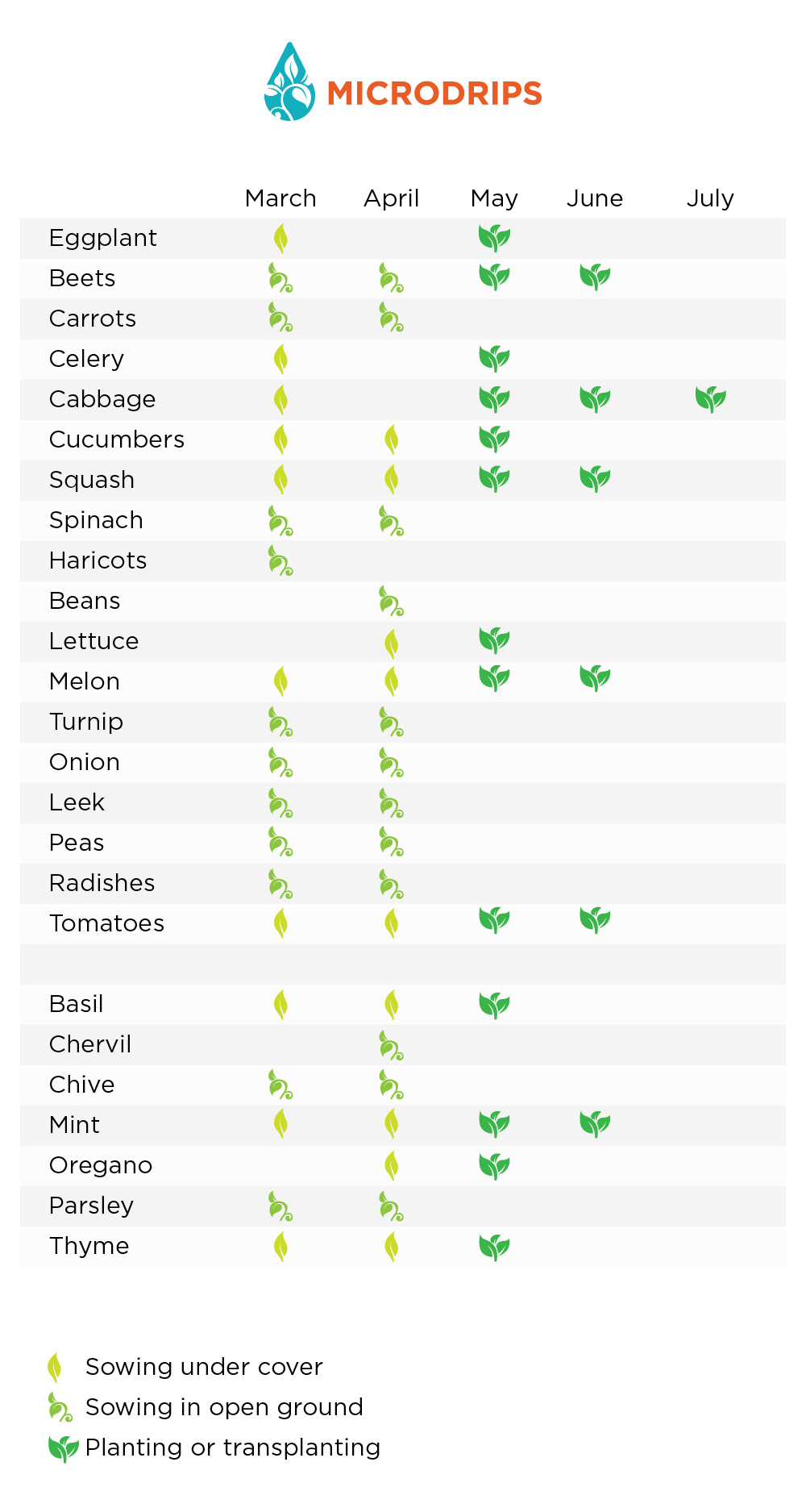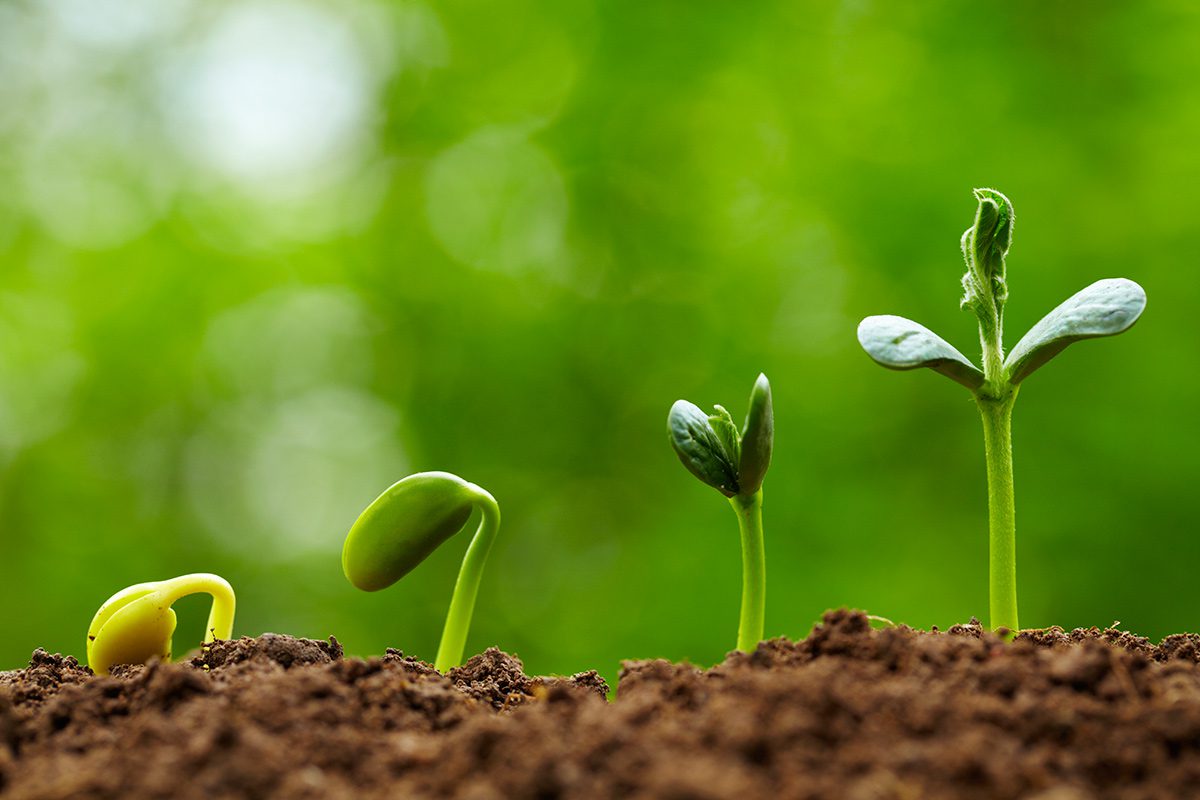Before even thinking about installing your micro-irrigation system, you must first prepare your seedlings. This first step certainly challenges our green thumbs and patience. If the vibrant sunshine of spring invites us to put out into the open air what has hibernated for too long, it is not always synonymous with the thawing of the ground. So, be careful and refer to experienced gardeners!
Choose the Right Moment
Horticulturists in greenhouses and nurseries will testify to it: don’t be too eager to plant!
It is important to know when is the right time for each type of seedling. Otherwise, an undesirable scenario may occur: a growing plant, stuffed with roots, ready for transplanting, but a cold and rainy weather. As a result, the plant experiences a shock that considerably slows down its development. Indeed, bad weather can cause the plant to rot or become vulnerable to undesirable diseases and insects.
Generally speaking, planting takes place after the last frost date. Depending on the year and region, this date can change, hence the importance of being flexible and patient with your seedlings. Fortunately, a seedling calendar allows us to be right on the perfect time.
Refer to a Seedling Calendar
Misbelief, March is not the ideal month to plant everything. Each type of plant has its own optimal moment to be sowed. So that we can combine business and pleasure, we strongly suggest that you consult or print a sowing calendar and display it on the fridge.
While considering indoor preparation as well as indoor and outdoor transplanting, you can see below the MicroDrips Seedling Calendar that will help you prepare your new sprouts. Transplantation involves removing a young plant from its original location and replanting it in a larger container. Its purpose is to allow the plant an optimal space to grow. Tomato plants, for example, often go through such a transplantation process.
We have selected some essential vegetables to sow between March and April such as eggplant, carrots, celery, cabbage, chive, cucumbers, squash, spinach, haricots, beans, melon, pumpkin, turnip, leek, peas, radishes, lettuce, beets and tomatoes. We have also included some fine herbs such as basil, oregano, thyme, mint, and parsley.

Prepare your Seedlings in a Few Steps
Before planting seeds directly outside, you should refer to the information on their respective packet. When it comes to preparing indoor seedlings (semi-sheltered), here are some steps to consider:
- Fill your clean containers with potting soil that is specifically designed for planting and compact slightly. A good soil must be porous and light to maintain the moisture content and allow small roots to expand. It generally consists of peat, perlite and / or vermiculite, as well as sand;
- Moisten the soil without soaking it;
- Arrange the seeds on the potting soil without clamping them together too much;
- Slightly cover the seeds with potting soil. Consult the seed light requirements indicated on the packet. The distance between the seed and the soil surface depends on it.
- Until the first sprouts come out of the ground, cover with a dome such a plastic lid with holes. When the first sprouts come out of the ground, remove the dome.
- Water gently. Before you use drip irrigation to your advantage, use a spray bottle to water your seedlings. The idea is to avoid digging seeds because of water pressure. Even though they have been watered, they could dry out under the direct sun.
If you have to transplant your seedlings, that is, to transplant them into a larger pot, make sure to keep the heap of soil around the roots called “clump” in the jargon of gardening.
Give the Right Amount of Lighting and Ventilation
At the germination stage, our seedlings do not need a high exposure to light. You should rather make sure they have enough moisture and constant heat. The holed plastic dome makes it possible to control these important factors to germination. Do not to place it in full sun. Otherwise, young sprouts stifle!
At the first signs of spry leaves, the dome can be removed. Consequently, it is important to position the young sprouts to more light, that is, the sunniest place in your house. With a good dose of sunlight, your seedlings will be stronger and of a more lively green. In order to ensure that they grow straight, it is advisable to rotate from a quarter turn once or twice a week.
Note that it is not necessary to add fertilizer to your seedlings. Seeds have everything they need to emancipate themselves during the first weeks!
Before transplanting anything, you must set up your drip micro-irrigation system to continue your watering properly. Begin by familiarizing yourself with the different parts of the micro-irrigation system, make a plan, and here we go, your plants will be taken care of without too much worry!

